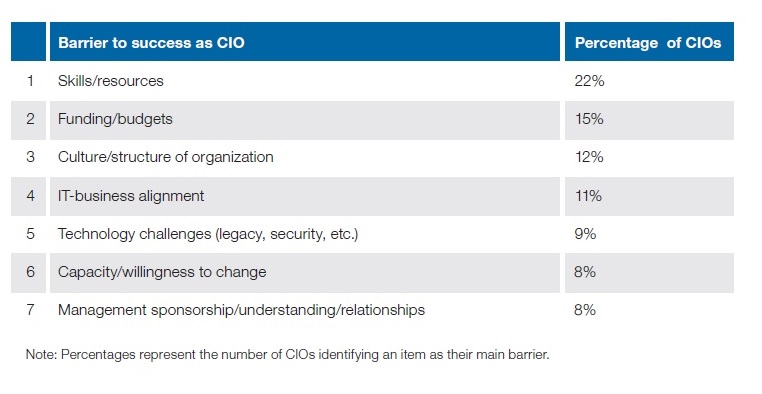Gartner ITXPO: Analyzing the Top Barriers to CIO Success
A scarcity of IT talent, automation convergence, and a move from prevention to detection in security emerge as the the top barriers to success as CIO.

Just a few weeks ago, I had the opportunity to attend Gartner’s Symposium/ITXPO in Orlando, Florida. ITXPO is always a great event filled with a lot of new ideas as well as a forum to speak with IT leaders about their views and experiences on current challenges and new technologies. This year, in particular, I noticed a significant overlap between what Gartner analysts were speaking about in sessions and the challenges and upcoming projects CIOs and IT Managers were talking about on the exhibit floor.
The IT Skills Gap
While the Gartner keynote focused on topics like the API economy and the connectedness of everything, one of the most interesting things that stood out from the Keynote that also appeared throughout the event in various sessions was the challenge businesses and CIOs are facing today: a critical scarcity of IT talent.
Both in the Gartner Keynote as well as in VP & Gartner Fellow Dave Aron’s 2016 CIO Agenda, we kept hearing how talent is the single biggest challenge standing in the way of CIOs. According to the 2016 Gartner CIO Agenda Report, 22% of CIOs found that a lack of skills/resources was their biggest barrier to success as CIO. And with the ever-changing needs of digitalization, talent management practices are simply not keeping up with the accelerating pace of change.

Without the skilled people, projects like creating a big data initiative or even just finding a way to better manage legacy systems with new applications, never take off or are riddled with problems.
And with a projected 1% growth in budgets, Aron advised IT leaders are going to have to be creative to find money to tackle this challenge and invest in digitalization.
We heard this echoed on the exhibit floor as well during a discussion with a healthcare CIO in North Dakota who pointed out that his state’s 2% unemployment rate would ordinarily be a good thing…except for the fact that he can’t find enough skilled people to fill the open positions in his department. As a result, this CIO was looking for solutions to help bridge the gap between the lack of people resources and the abundance of technologies and applications to manage in his environment.
Automation is an Essential Piece of the Puzzle
In addition to what we learned on the talent front, another heavily emphasized topic that is very dear to us was the emphasis on the need for automation to help manage the complexity that is arising from digitalization.
Gartner analysts predict a “post-app era” where digital devices will play a larger, much more active role in human and business interactions. For instance, the days of actually scheduling your oil change or maintenance on your car will most likely be coming to an end in just a few years. Gartner anticipates cars will be equipped with predictive maintenance so that when, for instance, your oil needs to be changed or your oxygen sensor detects the levels are low, data will be sent to your local server center where the technician will schedule you for maintenance and automatically push send a message notifying you when to come in.
However, as Gartner VP Distinguished Analyst Ted Friedman, warned in “The Internet of Things Forces the Largest Step-Change Ever in Information Management”, as more data becomes under our purview, more end points generating that data need to be managed.
Automation provides the critical connection between IoT and business applications, providing the necessary orchestration for the millions of things and agents working together. According to Gartner research, by 2018, 6 billion connected things will be requesting support.
Security: A Shift from Prevention to Detection
Lastly, there was a distinct focus on security as it relates to both new trends like IoT and more traditional challenges issues like legacy systems becoming brittle and breaking, as we saw this past July with the United, NYSE outages.
Gartner encourages a shift from the “prevention” mentality to a “detect and respond” strategy, going from 90% prevention and 10% detection to 60% prevention and 40% detection. Rather than slowing down digitalization and preventing different forms of customer access or creating onerous security policies, organizations should embrace the digitalization because as Gartner grimly pointed out, just about everyone gets hacked in today’s world. According to research, 70% of business have had to go into disaster recovery in the past two years alone.







